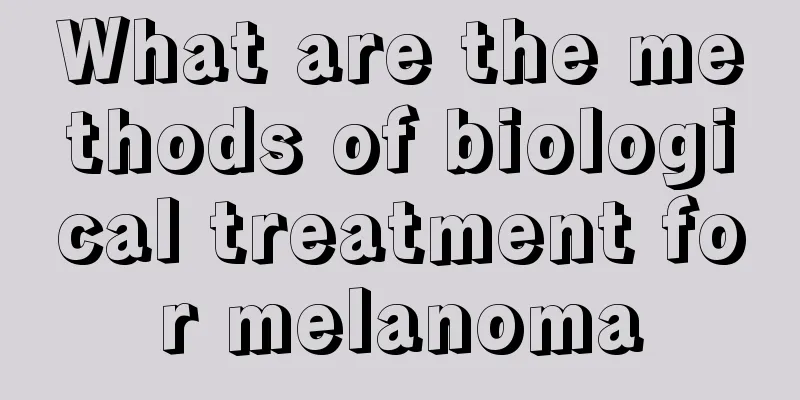What are the histological classifications of nasopharyngeal carcinoma

|
In recent years, nasopharyngeal carcinoma has become one of the major diseases that endangers society and human health, and it has brought great pain and distress to humans. In order to reduce the incidence of nasopharyngeal carcinoma, we humans should master the histological classification of nasopharyngeal carcinoma: 1. Carcinoma in situ The concept of carcinoma in situ means that the cancer cells have not yet broken through the basement membrane, and nasopharyngeal carcinoma in situ is no exception. There must be a complete basement membrane under the cancer. When the carcinoma in situ cells proliferate and protrude upward to the subepithelium in the form of buds or spikes, there is still a clear basement membrane separating the cancer cells and the underlying mucosal lamina propria. The diagnosis of nasopharyngeal carcinoma in situ is mainly based on cytological criteria, followed by histological arrangement and structure. Therefore, the cytological criteria for diagnosing nasopharyngeal carcinoma in situ must be strictly mastered, that is, its anaplastic image must reach a generally recognized level. Compared with normal epithelial cells, the nuclear-cytoplasmic ratio of carcinoma in situ cells is increased, that is, the nuclear area is significantly increased. 2. Invasive cancer (1) Microinvasive carcinoma: refers to the basement membrane being destroyed by cancer cells, but the scope of invasion does not exceed one field of view under a 400-fold microscope. The cell morphology is more atypical than that of carcinoma in situ, and it grows invasively through the basement membrane. (2) Squamous cell carcinoma: Although most nasopharyngeal carcinomas originate from columnar epithelium, most nasopharyngeal carcinomas are squamous cell carcinomas. To diagnose squamous cell carcinoma, the sections must have the characteristics of squamous differentiation. The so-called squamous differentiation refers to: ① keratinized beads; ② intracellular and extracellular keratinization; ③ intercellular bridges; ④ the arrangement of cells in the cancer cell nests is similar to squamous epithelium, and the cells are not syncytial. According to the degree of squamous differentiation of cancer cells, nasopharyngeal squamous cell carcinoma can be divided into three levels: high, moderate and low differentiation. ① Highly differentiated squamous cell carcinoma: Most cancerous tissues with intercellular bridges or keratinization are called well-differentiated squamous cell carcinoma, or keratinized squamous cell carcinoma. There is generally no lymphocyte infiltration in the cancer nests, but sometimes individual scattered lymphocytes can be seen. The boundaries of the cancer nests are generally clear, and sometimes they are surrounded by a complete membrane. The matrix of this type of cancer is mostly fibrous tissue type. It is accompanied by infiltration of neutrophils, lymphocytes, plasma cells, etc., but there are generally not too many plasma cells. ② Moderately differentiated squamous cell carcinoma: refers to nasopharyngeal carcinoma in which clear intercellular bridges and/or keratinization are seen in the cancerous tissue, not individually but in a certain number. The amount of intracellular and extracellular keratinization is much less than that of highly differentiated squamous cell carcinoma. There are varying numbers of lymphocytes infiltrating in the cancer nests, and varying numbers of plasma cells around the nests. The interstitial changes are similar to those of poorly differentiated squamous cell carcinoma, but different from those of highly differentiated squamous cell carcinoma. The above is the histological classification of nasopharyngeal carcinoma. Expert Tip: If you have symptoms of disease, do not delay diagnosis and go to a regular hospital for treatment in time to avoid delaying the disease and causing serious consequences. If you have other questions, please consult our online experts or call for consultation. Nasopharyngeal cancer http://www..com.cn/zhongliu/bya/ |
<<: What are the examination methods for laryngeal cancer
>>: What are the clinical manifestations of ovarian cancer?
Recommend
What are the effects of furnace-dried stone detergent
The effect of furnace-dried stone lotion in treat...
How to remove the black marks on the legs
Everyone wants their legs to be white and tender....
Why do people get lung cancer when their genes haven't mutated?
Targeted drugs have freed some lung cancer patien...
The early symptoms of cardia cancer are mild and occur intermittently
Early symptoms of cardia cancer are often caused ...
What to do if glioma recurs
With the development of society and the improveme...
Is hair thinning good?
The beauty and hairdressing industry in our count...
What is iritis?
The human eye is not only used for a wide range o...
Proven prescription for external treatment of skin cancer with traditional Chinese medicine
Traditional Chinese medicine often uses a combina...
Can aloe vera gel be used to remove scars from burns?
Burns and scalds are very common phenomena in nor...
How to effectively treat liver palms?
If you want to effectively treat liver palms, you...
How is breast milk formed
Breast milk is the best gift for a baby who has j...
How to wash blood stains from clothes, here are some cleaning tips
In our daily lives, we may get injured for some r...
Is it okay to be in a coma due to advanced brain cancer?
Intracranial malignant tumors mainly include glio...
How to treat patients with spleen deficiency
People nowadays are always busy with their work a...
Is it harmful to soak Atractylodes macrocephala in vinegar and rub it on the face
Atractylodes is a medicine with multiple medicina...









